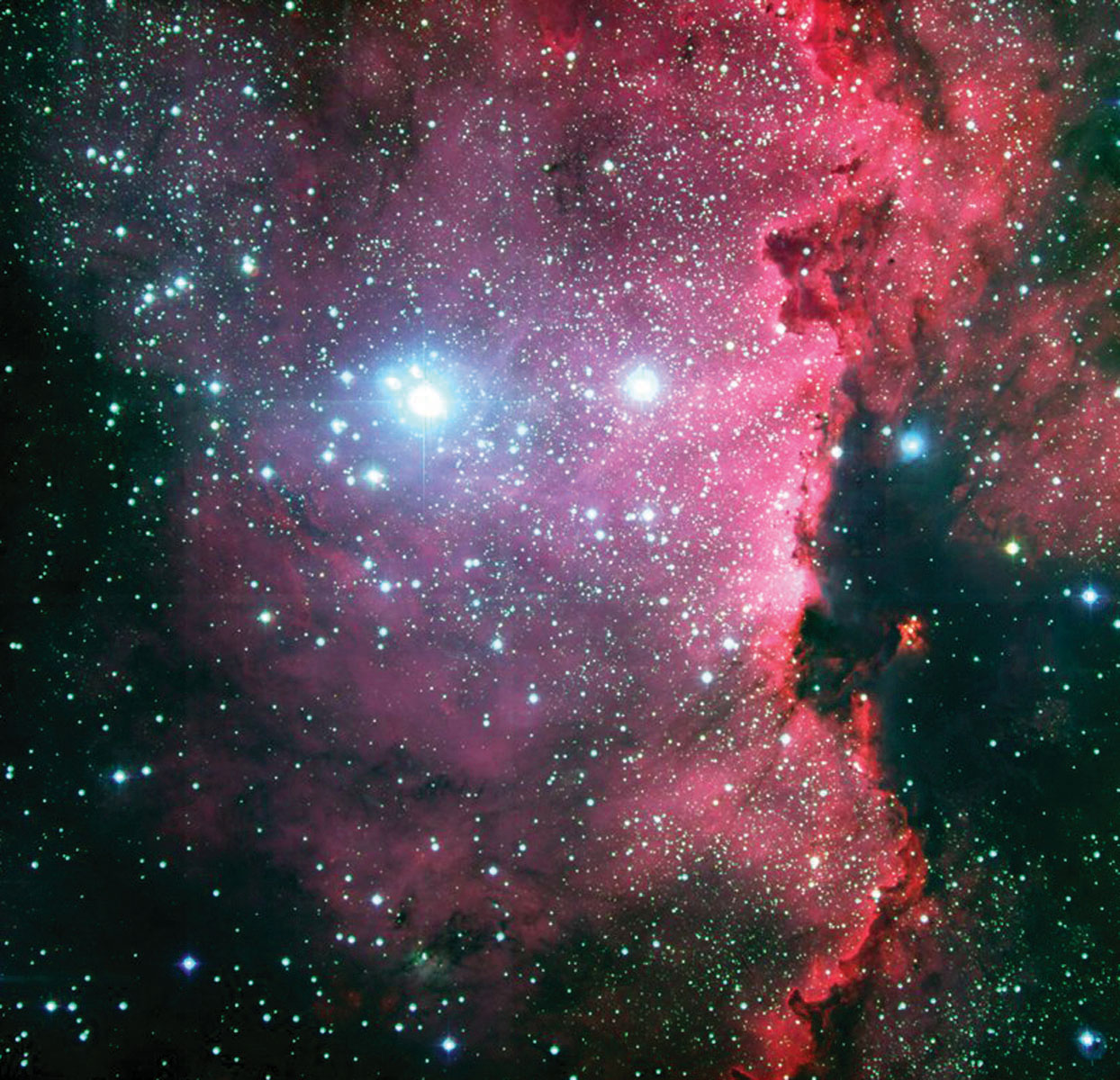505
CHAPTER
18

A region of star formation about 1400 pc (4000 ly) from Earth in the southern constellation Ara (the Altar).
The Birth of Stars
LEARNING GOALS
By reading the sections of this chapter, you will learn
| 18–1 | How astronomers have pieced together the story of stellar evolution |
| 18–2 | What interstellar nebulae are and what they are made of |
| 18–3 | What happens as a star begins to form |
| 18–4 | The stages of growth from young protostars to main-sequence stars |
| 18–5 | How stars gain and lose mass during their growth |
| 18–6 | What insights star clusters add to our understanding of stellar evolution |
| 18–7 | Where new stars form within galaxies |
| 18–8 | How the death of old stars can trigger the birth of new stars |
The stars that illuminate our nights seem eternal and unchanging. But this permanence is an illusion. Each of the stars visible to the naked eye shines due to thermonuclear reactions and has only a finite amount of fuel available for these reactions. Hence, stars cannot last forever: They form from material in interstellar space, evolve over millions or billions of years, and eventually die. In this chapter our concern is with how stars are born and become part of the main sequence.
Stars form within cold, dark clouds of gas and dust that are scattered abundantly throughout our Galaxy. One such cloud appears as a dark area on the far right-hand side of the photograph on this page. Perhaps a dark cloud like this encounters one of the Galaxy’s spiral arms, or perhaps a supernova detonates nearby. From the shock of events like these, the cloud begins to contract under the pull of gravity, forming protostars—the fragments that will one day become stars. As a protostar develops, its internal pressure builds and its temperature rises. In time, hydrogen fusion begins, and a star is born. The hottest, bluest, and brightest young stars, like those in the accompanying image, emit ultraviolet radiation that excites atoms in the surrounding interstellar gas. The result is a beautiful glowing nebula, which typically has the red color characteristic of excited hydrogen (as shown in the photograph).
In Chapters 19 and 20 we will see how stars mature and grow old. Some even blow themselves apart in death throes that enrich interstellar space with the material for future generations of stars. Thus, like the mythical phoenix, new stars arise from the ashes of the old.
506